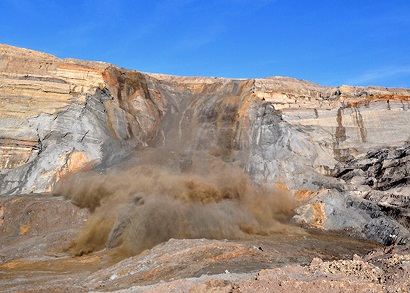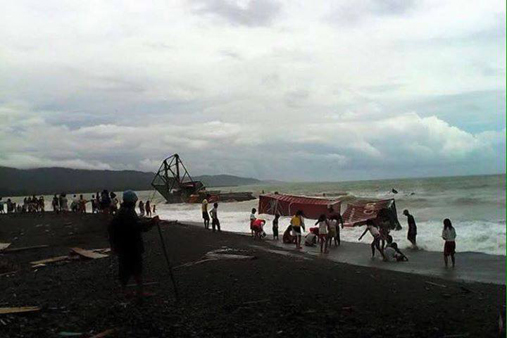
By Ellen T. Tordesillas
Antique Gov. Rhodora Cadiao’s worst fear has come true: it didn’t take long after the July 17 accident in Semirara Coal mine that killed nine workers that the suspension was lifted.
News reports Wednesday said the Department of Environment and Natural Resources has lifted its suspension order against Semirara Mining and Power Corp.’s environment compliance certificate covering the expansion of its coal mine in Antique less than a month after a landslide happened in the area that buried alive nine people.
Semirara Mining Corp. , the biggest coal miner in the Philippines and accounts for 92 percent of the total production in the country, is located in the island of Caluya in Antique, a province in Panay island in Western Visayas.
When the accident happened last July 17 and DENR’s Environmental Management Bureau in Region 6 issued an indefinite cease and desist order four days after, Cadiao said “Baka ang mangyari diyan, after two weeks, balik naman sila. Babayaran na lang nila ang mga victims kasi last time (2013 incident), binigyan nila ng P1 million each.”
When the landslide happened last month, Cadiao was so upset because as she pointed out, it was not the first time that it happened. In 2013, five workers died in a landslide in another site of the 55- square kilometer mining area.
As head of the Provincial Disaster Risk Reduction and Management Council of Antique , Cadiao spearheaded the passage of a resolution calling for the closure of the Panian pit.
Following the landslide last July 17, the Department of Energy immediately ordered the suspension of the mining operations. The DENR suspension came later.
As of this writing, there was no word on the lifting of the suspension order by DOE.
In lifting its July 21 suspension of the environmental compliance certificate for Semirara’s East Panian project, DENR believed Semirara’s line that it did not violate any provision of its ECC and the accident that occurred in the mine site did not have any adverse impact on the environment.
The collapse of the mining wall that buried nine workers alive was a “fortuitous event” beyond its control, Semirara said.
The mining company also said that erosion control measures have been put in place.
SMPC is owned by DMCI (David M. Consunji Inc.), the same company that owns the notorious Torre de Manila, the Rizal monument photo bomber.
What I find intriguing in the Semirara mining case in Antique is that, despite the two accidents that killed workers, the Catholic church, unlike in other provinces, is not active in opposing Semirara mining operations.

When I went for the Sunday mass, I was surprised to see the church building razed to the ground. I was directed to the nearby elementary school gym where the mass was held.
I was told that the old church was demolished because DMCI offered to build a whole new church building for our parish. It was supposedly a P30-million church building and the priest and the parishioners accepted.
Construction materials and equipment were sent from Semirara first week of July. Unluckily the barge carrying the materials and equipment sank after it ran aground in Sabang West in Bugasong, a town next to barrio Guisijan, where the DMCI-donated church is to be built.
A church member said DMCI told them not to worry because they’ll send again another boat-load of materials and equipment.
I was told that the Guisijan church is not the first that DMCI has built in Antique.
DMCI certainly knows how to get its way.
it only shows DMCI had been making big time in their mining operations, thanks to their patrons in and out of the government. what is a few million pesos for them as payment for lives that perished as a result of their greed compared to non stop billions they would rake in their business?
that is their game – disregard of the environment while pricing the lives of workers in exchange of wealth.